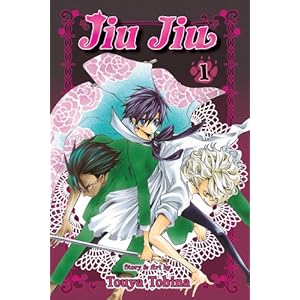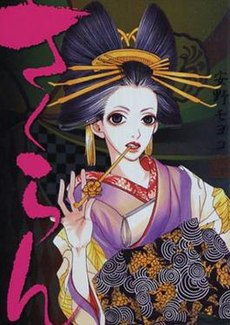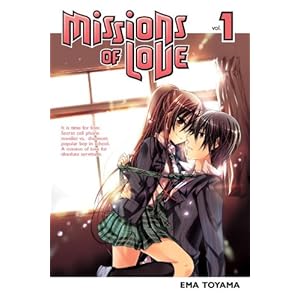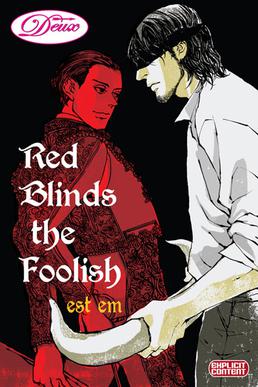Well, the last review was a bit...unpleasant. So, let us focus on something more highbrow, something classier, some literary, and proof that Seven Seas can release more than otaku bait.
YOUNG MISS HOLMES (Christie: High Tension), by Kaoru Shintani. First published in 2006, and first published in North America in 2012.
PLOT: Lady Crystal "Christie" Margaret Hope is many things: the only child of a noble family, a shockingly well-read and intelligent young girl, and the niece of the one and only Sherlock Holmes. Thus, she often ends up involved (by choice or by accident) with her uncle's investigations, and often her mind and her deductions are equal to that of her uncle. Of course, she doesn't solve them single-handedly - she has her Great Dane, Nelson, and her maids Nora and Ann-Marie to help and protect her. Be it a case of jewel thieves, suspicious suicides, or even the supernatural, Christie is determined to the bottom of the case.
STORY: Young Miss Holmes is a charming take on some of the classic Holmes stories. It's also based around the biggest Canon Sue I've seen outside of fanfiction.
The signs are all there. The character has a long aristocratic name but goes by a cutesy nickname. She's barely a preteen, but has an intellect greater than most adults and equal to that of one of the world's greatest detectives. She always manages into insert herself into the cases, and thus always having a hand in the solving of these classic crimes and earning the respect of those around her (even the begrudging respect of her uncle). She reminds me strongly of Wesley Crusher, the creator's pet who tormented the crew with his earnestness and know-it-all nature on
Star Trek: The Next Generation. She's rarely shown to have any faults, and what few she does have are overcome in the matter of a few pages. She's so perfect that it's almost sickening, and because of that she never feels like a real character, or at least a real child.
Her maids were slightly more interesting charcters, or at least hinted to have more interesting backgrounds since both are suprisingly well-versed at the use of pistols and whips. Otherwise, Nora is your typical sassy Cockney comic relief character, and Ann-Marie is the prim and proper straightwoman. Holmes and Watson are not given a lot of screentime, or a lot of personality for that matter. Shintani must be presuming than anybody picking this up is already familiar with them and what their personalities are like. Finally, there's Christie's saintly new governess Grace, who always seems to have the right lesson on hand during those few times when Christie hits a dead end. She's most there to serve as a deus ex machina.
Now, the mysteries themselves are solidly written, but then Shintani can't take any credit for that - they're all adapted straight from the source material (in this case, from "The Adventure of the Mazarin Stone," "The Problem of Thor Bridge," "The Adventure of the Red-Headed League," and "The Adventure of the Dancing Men"). There is one original story, "The Adventure of the Sussex Vampire," and it stands out for many reasons.
The first reason is that it's a crossover with
Dance In The Vampire Bund, which seems like an odd manga to pair up with this one. Maybe it's just me, but I wouldn't think there would be a lot of audience crossover for "cute little Victorian girl solves mysteries" and "loli vampire queen and her pet werewolf." The second reason is that the Holmes universe is one where science and logic reign surpreme, and where things that seem supernatural (such as ghost hounds stalking the moors) have tangible, read-world explanations. Thus, a story where real, god-to-honest vampires exist makes for a strange fit within the world of Sherlock Holmes. It's especially strange considering that outside of introducing Christie into the cases, Shintani remains pretty faithful to the original stories. Finally, the events of "Sussex Vampire" are ultimately kind of pointless - the events of this story have no noticeable consequence on the subsequent ones. "Sussex Vampire" is essentially one big Big Lipped Alligator Moment.
I feel like I've been harsh on this manga, because for all its faults
Young Miss Holmes is an enjoyable read. It incorporates a lot of lesser-known Holmes stories, and it may serve as inspiration for others to seek out the original versions. Tonally, it's as light as a soap bubble, and I could see this appealing to older children looking for a mystery series to read. Still, it cannot be denied that the heroine is a major Mary Sue, and older readers (espeically those who know their Holmes canon) may find themselves siding with Sherlock in finding Christie less precocious and cute and more annoying and unnecessary.
ART: It's surprising to learn this dates to 2006, because the artstyle is much more reminscient of 1970s shoujo. I think that mostly comes from the character designs of Christie and company, as they have the large, dark, glittering eyes of a 1970s shoujo heroine. Aside from those, their faces are quite simple, and the line used to distinguish their cheekbones often has the effect of making them look like they have no nose. Overally, they look simple and rounded, almost chibi-fied. The rest of the cast looks a bit more solid and angular, although still rather cartoony, and I suspect from the appearance of Holmes that Shintani's favorite was Jeremy Brett. I should also note that while the story is an odd fit, the characters from
Vampire Bund fit rather seamlessly into the volume.
The panels are filled to the brim with detail, from the patterns on Christie's dresses to the well-researched settings in both city and country. They also do tend to be rather small and chatty, but that is almost to be expected with mysteries. It's never too busy to follow, though, for what that's worth.
Young Miss Holmes has an artstyle which suits its light tone, works well with its setting and subject, and shows some surprisingly old influences.
PRESENTATION: This series is being published in 2-in-1 omnibuses. The only extra to be found, though, is an epilogue to "Sussex Vampire" drawn by the mangaka for
Vampire Bund, which adds nothing to the story and feels more like fanservice for
Vampire Bund fans than
Young Miss Holmes fans. Part of me feels like Seven Seas missed out here by not including some sort of notes about how most of these cases are based on actual Holmes canon, or taking the opportunity to fill in the reader about the Holmes universe.
RATING:

This alternate universe take on Sherlock Holmes is not without its charms, but also not without its faults. I suspect younger readers will get more enjoyment out of it than older ones, and Holmes fans will either enjoy the shoutouts to their beloved stories or rip their hair out at the creative differences.
This series is published in the USA by Seven Seas. 4 of the 7 available volumes have been released over 2 omnibuses and are currently in print.
You can purchase this volume and many more like it through RightStuf.com!
Want a chance to win Volume 1 of this and 5 other series? Leave a comment to enter the 12 Reviews of Christmas Giveaway here!
















I also want to give kudos to Verticle for putting Paradise Kiss back into print, since it's great and should be print.